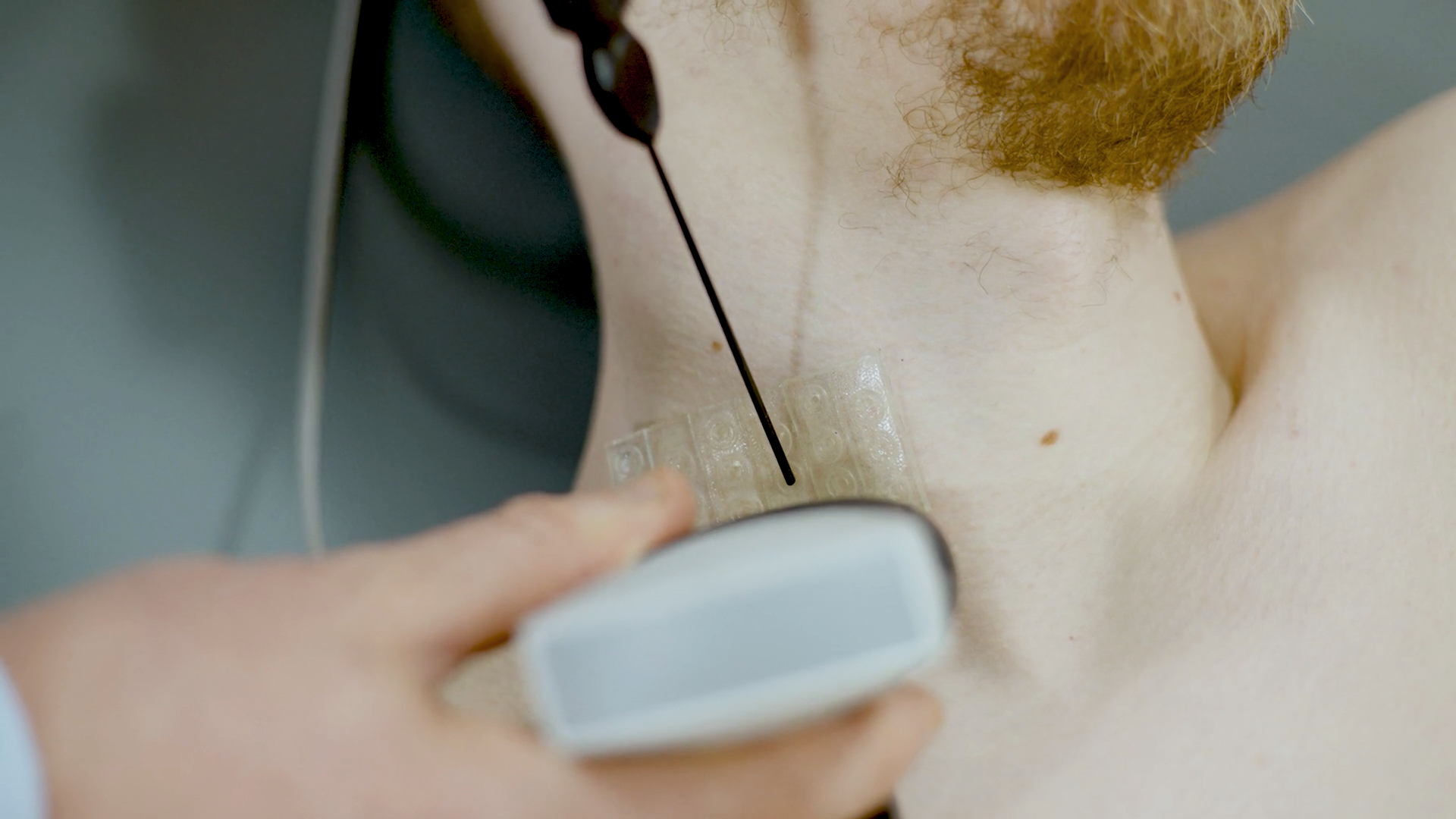
Einstein Healthcare Network Selects NeedleTrainer™ to Drive Innovation and Learning in Nurse Anesthesia Program
The Frank J. Tornetta School of Anesthesia at Einstein Medical Center Montgomery, embraced innovation, rolling out NeedleTrainer to provide hands on ultrasound training and develop graduate nurse anaesthesia student’s ability to safely, independently and competently perform nerve block procedures.
The Frank J. Tornetta School of Anesthesia at Einstein Medical Center/La Salle University School of Nursing, founded in 1951, provides didactic, clinical and simulation experiences in a doctoral educational framework for nurse anesthetists. Upon graduation from the program, students enter the profession as safe, clinically competent practitioners across a wide variety of anesthesia practice settings.
The administration of nerve blocks is included in the program’s simulation curriculum. Historically, the simulation team used a combination of educational tools to teach students peripheral nerve block techniques. Dr. Cynthia Betron, Associate Director, at the Frank J. Tornetta School explained “Prior to the incorporation of NeedleTrainer into our sim curriculum, our students would use less than ideal simulation tools available on the market to teach peripheral nerve block techniques.”
Already heavily invested in simulation and committed to using the latest innovations, together with Program Director Dr. Michael Kost, the program identified the need for a solution that would elevate the peripheral nerve block simulation experience for all students. As Dr. Kost stated, “the addition of NeedleTrainer now provides an extremely realistic environment to develop hand-eye coordination and ultrasound interpretation skills for all program students.”
Sadly, this took longer than expected. Dr Betron continued “There aren’t many health professionals that have to do peripheral nerve blocks outside of anesthesia. There are many departments who need needle simulation tools or central line trainers but trying to find a platform specific to needling and peripheral nerve blocks took many years to find – it was always in development”.
Finally, at an International Meeting on Simulation in Healthcare (IMSH) Dr’s Kost and Betron found NeedleTrainer.
The first of its kind, NeedleTrainer uses a retractable needle and virtual image overlays to simulate needling non-invasively on a live participant, using an authentic live ultrasound scan. While the platform lends itself to a number of applications including interventional radiology, vascular access and nephrology, originally developed for regional anesthesia, NeedleTrainer Plus includes highlighting of key sono-anatomical structures, helping with the identification of 10* high yield peripheral nerve blocks.
Dr Betron explained why NeedleTrainer met the school’s needs “Responsible for the simulation lab for the Nurse Anesthesia Program, I stay up to date with the latest equipment, technologies and learning disciplines. Virtual, hands-on training works best for our doctoral nurse anesthesia students, computer-based learning does not cut it alone, they need to learn the dynamics of ultrasound. NeedleTrainer allows our students to develop hand eye coordination, muscle memory development as they interpret the images they are seeing on screen, how to hold the ultrasound probe in the right plane, as well as being able to direct the needle in at the right angle”.
“NeedleTrainer teaches them to locate the specific block they need, without causing potential complications to patients, such as hitting a major blood vessel. This minimizes the risk of nerve damage or inadvertent vascular trauma and use of local anesthetic which can also be detrimental”.
One of the first Anesthesia Programs in the United States to invest in and roll out the platform, the school used NeedleTrainer to deliver advance practice training for the first time in the fall of 2022 and will train circa 24 graduate nurse anesthesia students at the end of their first clinical year again in 2023.
Dr Betron concluded “Ultrasound has become a standard of care when placing invasive lines, and in our case when placing nerve blocks. NeedleTrainer will support our program graduates in the lead up to their nerve block rotations, as part of their initial learning. In the future, it may also be used as a means of refreshing their knowledge if they haven’t performed a block in some time”.
For more information on NeedleTrainer, visit the product page. To request a demo, contact us.
*Femoral nerve block not currently available in the USA.